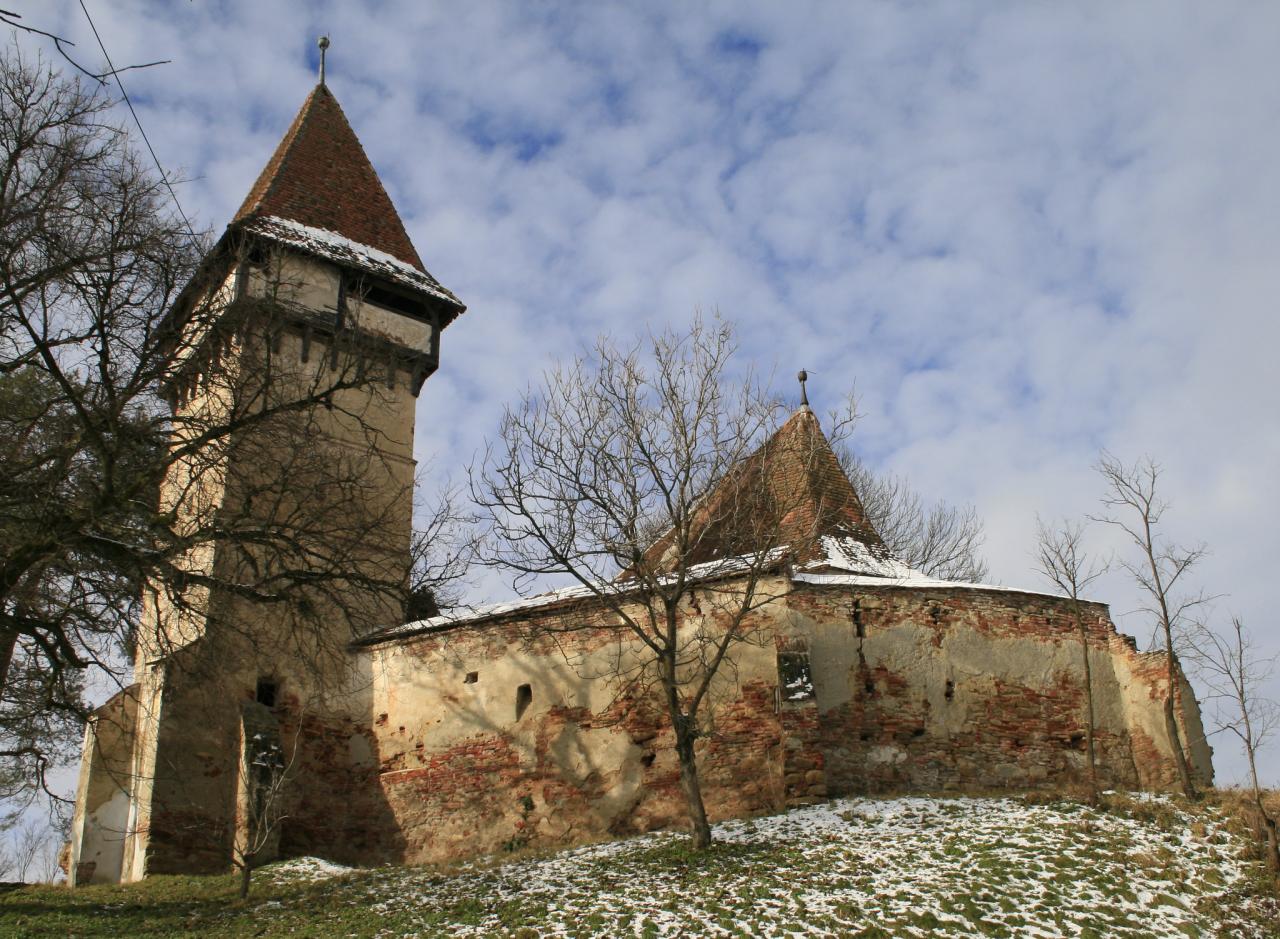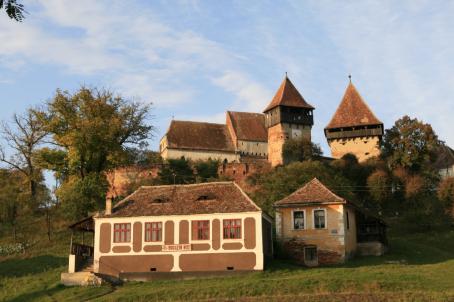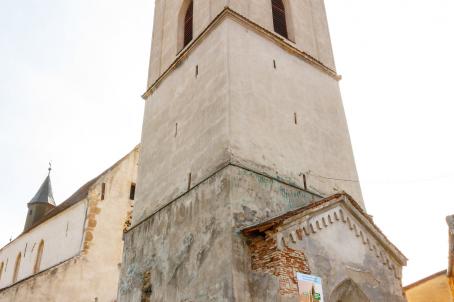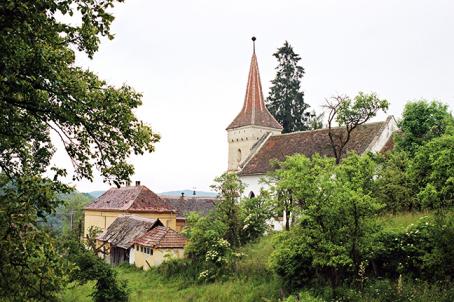Pelişor Fortified Church

The small towerless one-nave hall church in Pelişor was built in the 15th century and has remained almost unchanged until today. Only the nave was provided with a new stuccoed flat ceiling in the 19th century. In 1500 a polygonal curtain wall was built and endowed with four defensive towers, of which only the impressive gate tower with battlement walk survived the centuries. The assembly was strengthened on its western hillside with another wall with outer bailey built in 1600. The construction is still more than 10m high and preserves several defensive systems such as loopholes and embrasures.
The neoclassical white-golden altar consecrated in 1832 dominates the interior. The late Baroque organ however was moved to the evangelical church in Bucharest after restoration.
About this building
For more information visit on this building visit https://kirchenburgen.org/en/location/magarei-pelisor/





